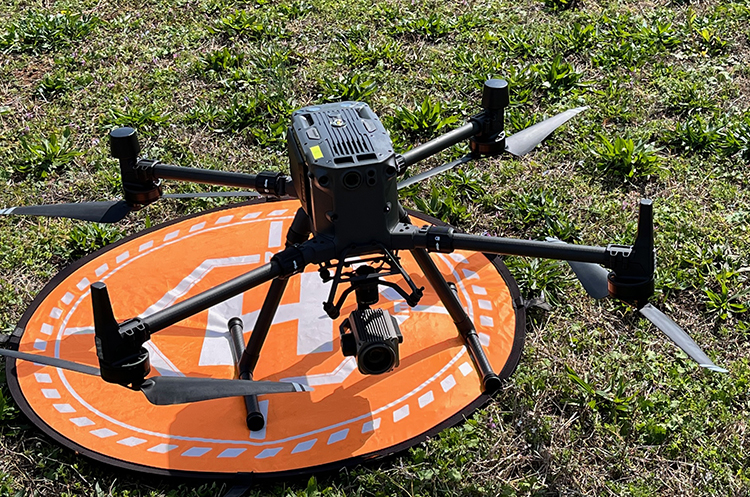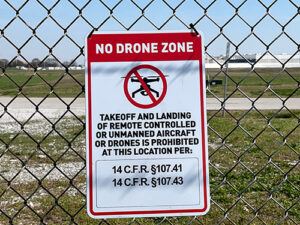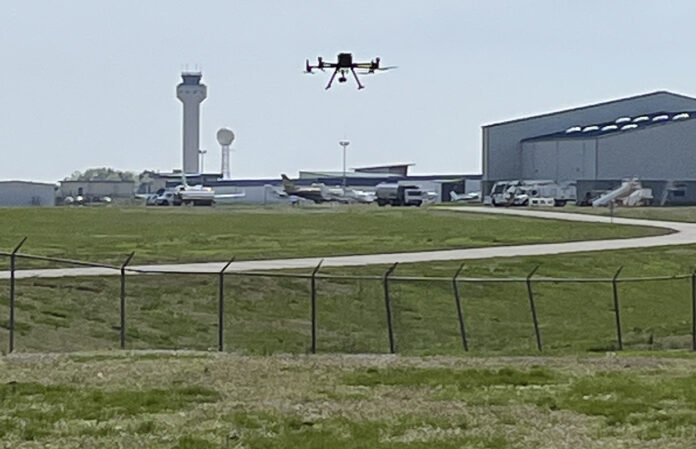HUNTSVILLE – Huntsville International Airport is one of five airports in the United States chosen to test detection technology for drones. The tests are specific to flying in the vicinity of an airport where it can be dangerous to passenger air traffic.
The airport is conducting the project in partnership with the University of Alabama in Huntsville and local UAS solutions provider EnrGies.
“Huntsville International Airport has always been about innovation and getting out in front of things and we have always been successful at it,” said Butch Roberts, CEO of the Port of Huntsville. “Things like being the first commercial airport to get a license from the FAA to land the Dreamchaser Spaceplane, we want to be at the forefront of helping develop technologies airports can use to better protect airspace nationwide.
“We decided to be a part of this, so we applied, and we were chosen.”
In 2022, there were 1,820 drone sightings in restricted airspace in the United States and that number was up by 398 sightings since 2021.
Foreseeing the continued growth of drones across the country on the commercial and the military side, Congress passed Section 383 of the FAA Reauthorization Act of 2018 mandating the Federal Aviation Administration test drone and unmanned aerial systems detection technologies specifically in an airport environment.

As part of the program, they were to select five airports representing standard airport operating conditions that also met FAA requirements for diverse testing environments.
After a two-year delay due to the pandemic, HSV has already completed one test and are currently in the midst of a second test that began in December and will sunset this coming September.
On a blustery day last week, HSV demonstrated a test in which EnrGies flew a drone along a security fence surrounding the airport’s perimeter marked as a “No Drone Zone”, then breached that zone and flew it into restricted airspace.
According to Ryan Gardner, senior operations manager at the airport, there are a number of tests upcoming, depending on how many technologies they can roll out from Atlantic City where the predominance of the baseline testing is taking place.

“Whatever passes in Atlantic City, they deploy at one of the four other airports to see if the testing there matches the testing they found in Atlantic City,” said Gardner, who has direct oversight of HSV’s interaction with the FAA and stakeholders on the technology testing. “We are hoping to get another rollout on technology here soon.”
In addition to HSV and Atlantic City International Airport, Rickenbacker Airport in Columbus, Ohio; Syracuse Hancock International Airport in New York; and Seattle-Tacoma International Airport are also test sites.
“We have a rich history of technology and UAS activity here in the Huntsville community,” said Gardner. “Airports have a lot of other equipment and technologies already in place. With drones becoming more prevalent, there is a need to be able to detect whether there is an unauthorized UAS in that environment.

“These tests look at technologies that are already being built by multiple companies to see how they interact with technologies that are already in an airport.
“That way we can make sure a drone can be detected, but do it safely without affecting any other operations.”
Threats, he said may not be malicious, but they can be dangerous. It can be someone playing loose and careless, or it could be someone with a new drone who wants to go out and fly it. Not knowing where they can and cannot go to do so, an open area like an airport is enticing.
“Those hazards are very similar to wildlife,” Gardner said. “If there is something in the airspace, another aircraft could collide with it or cause an issue that affects the safety of the traveling public.”
He said while there is obviously a lot of unauthorized activities that are perfectly safe, at least using these technologies, they can differentiate between someone who may be operating safely under the rules and someone who is not. If needed, they can assess the threat and deconflict.
“This work is important to ensuring safe airspace at our nation’s airports because of risks to life and equipment caused by something like the ingestion of a wayward drone into an airplane engine or of a UAS distracting a pilot,” said Kevin Vandeberg, chief operating officer at HSV.
For rules and regulations on permitted airspace, drone owners should visit https://www.faa.gov/uas.
Don’t miss out! Subscribe to our email newsletter to have all our smart stories delivered to your inbox.



